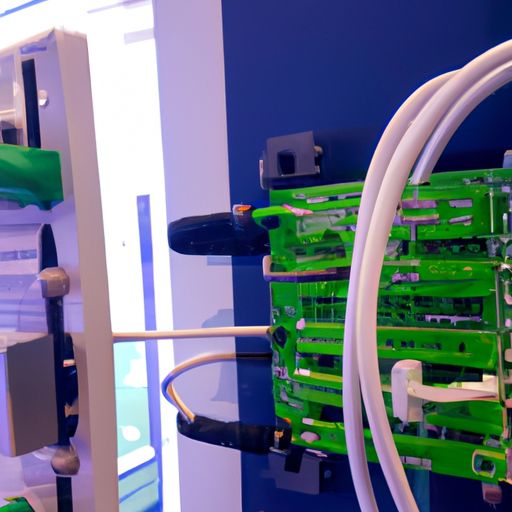What are the product features of ripple resistors?
The Evolution of Renewable Energy: A Path Towards a Sustainable Future
I. Introduction
As the world grapples with the pressing challenges of climate change and environmental degradation, the importance of renewable energy has never been more pronounced. Renewable energy refers to energy derived from natural sources that are replenished at a faster rate than they are consumed. This includes solar, wind, hydro, biomass, and geothermal energy. The transition to renewable energy is crucial in reducing greenhouse gas emissions, promoting energy security, and fostering sustainable economic growth. This article will explore the historical context of energy sources, the various types of renewable energy, the role of technology, global trends and policies, economic implications, challenges, and the future of renewable energy.
II. Historical Context of Energy Sources
A. Traditional Energy Sources: Fossil Fuels and Their Impact
For centuries, fossil fuels—coal, oil, and natural gas—have been the backbone of global energy production. The Industrial Revolution marked a significant increase in fossil fuel consumption, leading to unprecedented economic growth. However, this reliance on fossil fuels has come at a steep environmental cost. The burning of fossil fuels releases significant amounts of carbon dioxide and other greenhouse gases into the atmosphere, contributing to global warming and climate change. The environmental consequences of fossil fuel usage include air and water pollution, habitat destruction, and health issues for communities near extraction sites.
B. The Emergence of Renewable Energy
In response to the environmental challenges posed by fossil fuels, renewable energy began to gain traction in the late 20th century. Early uses of renewable energy can be traced back to ancient civilizations that harnessed wind and water for power. However, it wasn't until the 1970s energy crisis that significant investments were made in renewable technologies. Technological advancements, such as the development of more efficient solar panels and wind turbines, have paved the way for modern renewable energy systems.
III. Types of Renewable Energy
A. Solar Energy
Solar energy is harnessed through solar panels that convert sunlight into electricity. Photovoltaic (PV) cells, made from semiconductor materials, generate direct current (DC) electricity when exposed to sunlight. This energy can be used immediately, stored in batteries, or fed into the grid. The benefits of solar energy include its abundance, low operating costs, and minimal environmental impact. However, challenges such as high initial installation costs and dependence on sunlight availability can hinder widespread adoption.
B. Wind Energy
Wind energy is generated by converting the kinetic energy of wind into mechanical power using wind turbines. These turbines can be installed onshore or offshore, with offshore wind farms often producing more energy due to stronger and more consistent winds. The advantages of wind energy include its low operational costs and the fact that it produces no emissions during operation. However, challenges such as noise, visual impact, and the need for suitable locations can limit its deployment.
C. Hydropower
Hydropower is one of the oldest and most widely used forms of renewable energy. It involves generating electricity by harnessing the energy of flowing water, typically through dams. Hydroelectric power plants can provide a stable and reliable source of energy, making them a crucial component of many countries' energy portfolios. However, environmental considerations, such as the impact on aquatic ecosystems and displacement of communities, must be carefully managed.
D. Biomass and Biofuels
Biomass refers to organic materials, such as plant and animal waste, that can be used as fuel. Biofuels, derived from biomass, can be used to power vehicles and generate electricity. The role of biomass and biofuels in the energy landscape is significant, as they can help reduce reliance on fossil fuels and promote energy independence. However, concerns about land use, food security, and emissions from biofuel production must be addressed.
E. Geothermal Energy
Geothermal energy harnesses heat from the Earth's interior to generate electricity or provide direct heating. This renewable energy source is particularly effective in regions with high geothermal activity, such as volcanic areas. The potential for geothermal energy is vast, but challenges such as high upfront costs and site-specific limitations can hinder its widespread adoption.
IV. The Role of Technology in Renewable Energy
Technological advancements play a crucial role in the growth and efficiency of renewable energy systems. Innovations in energy storage, such as lithium-ion batteries, have made it possible to store excess energy generated during peak production times for use during periods of low generation. Smart grid technology enhances energy distribution by allowing for real-time monitoring and management of energy flow, improving efficiency and reliability. Additionally, artificial intelligence and data analytics are increasingly being used to optimize energy use, predict demand, and enhance the performance of renewable energy systems.
V. Global Trends and Policies in Renewable Energy
A. International Agreements and Commitments
Global efforts to combat climate change have led to international agreements, such as the Paris Agreement, which aims to limit global warming to well below 2 degrees Celsius. Countries are committing to reducing greenhouse gas emissions and increasing the share of renewable energy in their energy mix. These commitments are driving investments in renewable technologies and fostering international collaboration.
B. Government Incentives and Subsidies
Many governments are implementing incentives and subsidies to promote the adoption of renewable energy. These can include tax credits, grants, and feed-in tariffs that guarantee a fixed price for renewable energy producers. Such policies have proven effective in accelerating the deployment of renewable technologies and making them more competitive with fossil fuels.
C. Case Studies of Countries Leading in Renewable Energy Adoption
Countries like Germany, Denmark, and China are leading the way in renewable energy adoption. Germany's Energiewende (energy transition) policy has significantly increased the share of renewables in its energy mix, while Denmark is a global leader in wind energy production. China, the world's largest producer of solar panels and wind turbines, is rapidly expanding its renewable energy capacity to meet growing energy demands and reduce pollution.
VI. Economic Implications of Renewable Energy
A. Job Creation in the Renewable Energy Sector
The transition to renewable energy is creating millions of jobs worldwide. From manufacturing and installation to maintenance and research, the renewable energy sector offers diverse employment opportunities. According to the International Renewable Energy Agency (IRENA), the renewable energy sector employed over 11 million people globally in 2018, and this number is expected to grow as investments in clean energy continue to rise.
B. Cost Comparison Between Renewable and Non-Renewable Energy Sources
The cost of renewable energy technologies has decreased significantly in recent years, making them increasingly competitive with traditional fossil fuels. The levelized cost of electricity (LCOE) for solar and wind energy has dropped dramatically, often making them the cheapest sources of new electricity generation. This trend is expected to continue as technology advances and economies of scale are realized.
C. Investment Trends and Future Outlook for Renewable Energy Markets
Investment in renewable energy is on the rise, with billions of dollars flowing into the sector each year. According to BloombergNEF, global investment in renewable energy reached $501 billion in 2020, and this trend is expected to continue as countries strive to meet their climate goals. The future outlook for renewable energy markets is promising, with continued growth anticipated in solar, wind, and other renewable technologies.
VII. Challenges Facing Renewable Energy Adoption
A. Infrastructure Limitations and Grid Integration
One of the significant challenges facing renewable energy adoption is the need for updated infrastructure and grid integration. Many existing power grids were designed for centralized fossil fuel generation and may struggle to accommodate the decentralized nature of renewable energy sources. Upgrading grid infrastructure and implementing smart grid technologies are essential for maximizing the potential of renewables.
B. Public Perception and Misinformation
Public perception and misinformation about renewable energy can hinder its adoption. Misconceptions about the reliability, cost, and environmental impact of renewable technologies can create resistance to change. Education and outreach efforts are crucial in addressing these concerns and promoting a better understanding of the benefits of renewable energy.
C. Policy and Regulatory Hurdles
Policy and regulatory hurdles can also pose challenges to renewable energy adoption. Inconsistent policies, lack of long-term commitments, and bureaucratic red tape can create uncertainty for investors and developers. Establishing clear and stable policies that support renewable energy growth is essential for fostering a conducive environment for investment.
VIII. The Future of Renewable Energy
A. Predictions for Renewable Energy Growth
The future of renewable energy looks bright, with predictions indicating significant growth in the coming decades. According to the International Energy Agency (IEA), renewables are expected to account for nearly 80% of global electricity generation by 2050. This growth will be driven by technological advancements, decreasing costs, and increasing demand for clean energy.
B. The Role of Innovation and Research in Shaping the Future
Innovation and research will play a critical role in shaping the future of renewable energy. Continued investment in research and development will lead to breakthroughs in energy storage, efficiency, and new technologies. Collaborative efforts between governments, academia, and the private sector will be essential in driving innovation and accelerating the transition to a sustainable energy future.
C. The Importance of Public Engagement and Education
Public engagement and education are vital in fostering support for renewable energy initiatives. By raising awareness of the benefits of renewable energy and addressing misconceptions, individuals, businesses, and communities can play an active role in the transition to a sustainable energy future. Grassroots movements and community-based projects can empower citizens to advocate for clean energy solutions.
IX. Conclusion
The significance of renewable energy in addressing climate change and promoting sustainable development cannot be overstated. As we navigate the challenges of the 21st century, the transition to renewable energy offers a path towards a cleaner, more sustainable future. It is imperative that individuals, businesses, and governments work together to support the growth of renewable energy technologies and policies. By embracing innovation, investing in research, and engaging the public, we can create a world powered by clean, renewable energy.
X. References
1. International Renewable Energy Agency (IRENA). (2019). Renewable Energy and Jobs – Annual Review 2019.
2. BloombergNEF. (2021). New Energy Outlook 2021.
3. International Energy Agency (IEA). (2020). World Energy Outlook 2020.
4. United Nations Framework Convention on Climate Change (UNFCCC). (2015). Paris Agreement.
5. German Federal Ministry for Economic Affairs and Energy. (2020). The Energy of the Future: The German Energy Transition.
This blog post provides a comprehensive overview of the evolution of renewable energy, highlighting its importance, types, technological advancements, global trends, economic implications, challenges, and future prospects. By understanding the significance of renewable energy, we can collectively work towards a sustainable energy future.






